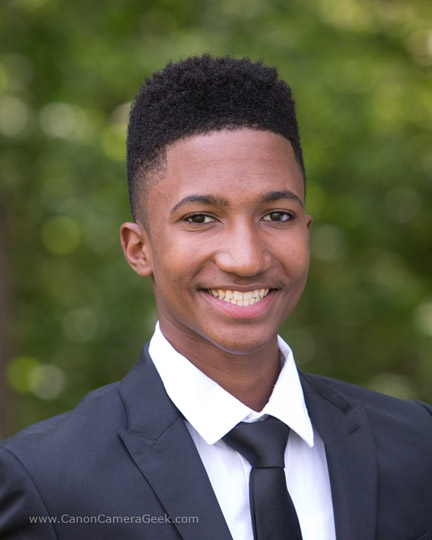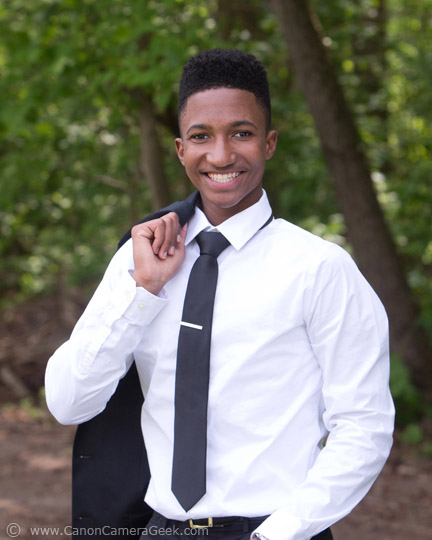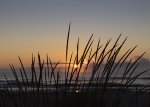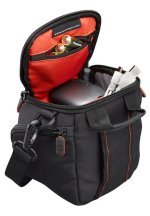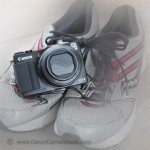Good Bokeh with the Canon 70-200 Lens
WRITTEN BY: BRUCE LOVELACE
UPDATED: JANUARY 15, 2024
Can you get good bokeh with the Canon 70-200 f/4.0 compared to the f/2.8? It's easy to get confused with the amount of softness of the background and the quality of the out-of-focus.
Getting good bokeh with either of the Canon 70-200 Lens is easy for you to accomplish if you use the right camera settings.
Getting good bokeh will make your portraits so much better, but how can you get that beautiful out of focus blurriness with the Canon EF 270200mm lens?.
It's all about zoom setting, f/stop, and distances.
If the distance between the subject and the background is sufficient, you get adequate bokeh at f/5.0.
With the 70-200 zoomed to 95mm, the bokeh is a little better than you'd get if you were shooting at a 70mm zoom setting.
BOKEH: The pleasing out-of-focus quality of the background that you get from a particular lens.
How to Get Good Bokeh with the Canon 70-200 Lens
Here are the three ways to get more bokeh in your photos using the Canon EF 70-200mm lens - and any other lens for that matter.
Use the Widest Aperture for the Most Bokeh
One of the biggest reasons Canon shooters love the 70-200 is for its maximum aperture of f/2.8. This gives you the ability to shoot in low-light situations as well as get faster shutter speeds for action photos.
Portrait photographers love the beautiful bokeh you can get shooting wide open at f/2.8. It's great for photographs of individuals, but with group shots you need more depth of field to make sure everyone is in focus.
Longer Zoom Means More Bokeh
You'll achieve more dramatic bokeh at 200mm than you will at 70mm. I've used my 24-105mm lens at 105mm at f/4.0 and that combination has given me decent bokeh.
Shooting with a 200mm lens setting gives you much more than just a decent bokeh effect.
Adjust Your Distances to Get the Maximum Bokeh
Subject and background distances affect the bokeh with the Canon 70-200 lens. When you bring the focusing point closer to the camera it gets farther away from the background.
The diagram below shows you how to get the best bokeh by adjusting the camera-to-subject and subject-to-background distances.

One more thing that affects the type of bokeh you get is the number of blades in the camera lens diaphragm. The more blades there are, the smoother the circular pattern in the background highlights.
Many camera lenses have 6 blades. Fans of bokeh like 9 or more blades. I hope this post on controlling bokeh with Canon lenses was helpful. was helpful. Use the search box below for other posts on this site or use one of the related links below my signature
Have a blast. Shoot a Canon!
Search for articles on this Site:


Bruce Lovelace is the publisher of Canon Camera Geek. Read more about him on the About Page. He also publishes how to articles and camera gear reviews at the Photography Tips website.
View some of Bruce's photos on Instagram and Flickr. Join the tribe of followers on YouTube. Bruce also runs photo workshops and provides 1 on 1 digital photography coaching.
Search for articles on this Site:
Recent Articles
-
My Review of The 10 Best Canon R6 Mark II Features That Impressed Me
Apr 12, 25 08:51 AM
Beyond the Pixel: Discover the Game-Changing Features That Make the Canon R6 Mark II a Must Have Camera -
Canon RF 24-105 Lens Comparison. Guide To Which One Is Right For You
Apr 07, 25 12:47 PM
Which is the best of the 3 versions of the Canon RF 24-105mm Lens for Canon mirrorless cameras? What's The 24-105 Lens Good For -
3 Better Alternatives to Camera Bags From Canon. Helpful Guide To Bags
Apr 03, 25 11:51 AM
After searching for the top best selling Canon bags, I found 3 better alternatives to camera bags from Canon -
Canon 70-200 2.8 Tripod Collar. Article and Video of The Advantages
Apr 03, 25 11:02 AM
Some call it an optional accessory. I say a canon 70-200 2.8 tripod collar is a necessity when using this lens on a tripod or monopod. -
Running With The G1X Mark II, Acting Like a Kid, You Should Try This
Apr 03, 25 10:31 AM
Ever get a new "toy" and want to just play? I did.Got my new Canon compact camera. Went running with the G1x Mark II
Sign up for a monthly update
 EF 70-200 Lenses
EF 70-200 Lenses Macro Means Bokeh
Macro Means Bokeh